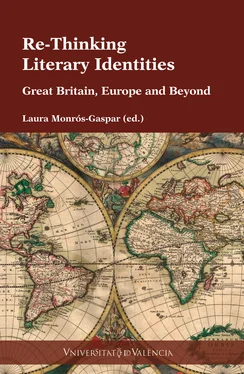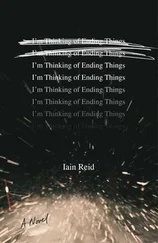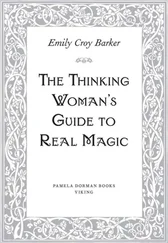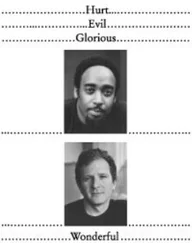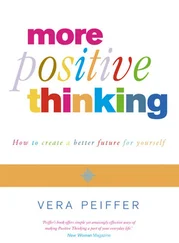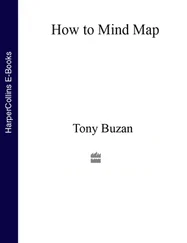AAVV - Re-Thinking Literary Identities
Здесь есть возможность читать онлайн «AAVV - Re-Thinking Literary Identities» — ознакомительный отрывок электронной книги совершенно бесплатно, а после прочтения отрывка купить полную версию. В некоторых случаях можно слушать аудио, скачать через торрент в формате fb2 и присутствует краткое содержание. Жанр: unrecognised, на английском языке. Описание произведения, (предисловие) а так же отзывы посетителей доступны на портале библиотеки ЛибКат.
- Название:Re-Thinking Literary Identities
- Автор:
- Жанр:
- Год:неизвестен
- ISBN:нет данных
- Рейтинг книги:3 / 5. Голосов: 1
-
Избранное:Добавить в избранное
- Отзывы:
-
Ваша оценка:
- 60
- 1
- 2
- 3
- 4
- 5
Re-Thinking Literary Identities: краткое содержание, описание и аннотация
Предлагаем к чтению аннотацию, описание, краткое содержание или предисловие (зависит от того, что написал сам автор книги «Re-Thinking Literary Identities»). Если вы не нашли необходимую информацию о книге — напишите в комментариях, мы постараемся отыскать её.
Re-Thinking Literary Identities — читать онлайн ознакомительный отрывок
Ниже представлен текст книги, разбитый по страницам. Система сохранения места последней прочитанной страницы, позволяет с удобством читать онлайн бесплатно книгу «Re-Thinking Literary Identities», без необходимости каждый раз заново искать на чём Вы остановились. Поставьте закладку, и сможете в любой момент перейти на страницу, на которой закончили чтение.
Интервал:
Закладка:
Nineteenth-century social constructions of identity are discussed in the last section of this book, which is entitled ‘Interrogating canonical identities’. Post-Darwinian theories on evolution and the representation of the other meet in Pettersson’s account of the performance of freak identities in neo-Victorian narratives. Pettersson takes the case study of the life of Lavinia Warren, a short-statured performer who was exhibited as a ‘dwarf’ in P.T. Barnum’s shows, to explore neo-Victorian adaptations of the freak show. Drawing on Deleuze, Michel Foucault and feminist theoretical approaches, Pettersson revisits two contemporary texts,—Jane Sullivan’s Little People: A Novel (2009) and Jessica Benjamin’s The Autobiography of Mrs Tom Thumb (2012),—to rediscover the freakish body as a site of empowerment, desire and significance. Yet if, with the advent of new disciplines such as neo-Victorianism, both peripheral and canonical identities of the British past are being interrogated, the literature published throughout the nineteenth century itself also provides a wealth of examples which question the prevailing mindset. The chapters by Cantillo and Puchal delve into two figures from the Greek and Roman tradition—Pan and Odysseus—to contest canonical identities in the second half of the nineteenth century.
Arthur Machen’s well-known story The Great God Pan , published in 1890, is the starting point for Cantillo’s analysis on the (de)construction of the identities of the ‘inimical Other’ which haunted the conservative imagination of the fin-de-siècle bourgeoisie. As Cantillo contends, Machen transforms the myth of Pan into a locus horridus where the Apollonian models of divinity are rejected and the peripheral identities of fin-de-siècle London are put into the foreground. Puchal also focuses on non-mainstream culture when she places Odysseus at the centre of the popular entertainment of the mid-nineteenth century. Her analysis focuses on the figures of the Imperial traveller and castaway understood as a commodification of the Greek hero through burlesque appropriations of Robinson Crusoe. As Puchal argues, following in the line of the circuses and minor theatres which billed Victorian dramatizations of epic deeds and battles, the social stereotypes revisited in H. J. Byron’s Robinson Crusoe; or, Harlequin Friday (1860) are perpetuated to test and contest the prevailing identity of the modern hero.
The chapters gathered in this volume substantiate that literature is indeed a space for cultural encounters. As Walter Benjamin manifested, ‘storytelling is always the art of repeating stories’ (1968: 91) yet the ubiquity of adaptation complicates the process as the new cultural products are not only haunted by the adapted texts but also by the adapted cultures. Such constant and even compulsory fluidity of literary frontiers at present is perhaps yet another example of the widespread cultural cannibalism of postmodern cultures. Yet at a time when the political frontiers of the so-called Western world are being persistently contested, Ricoeur’s often cited approach to modern cultural change is more pertinent than ever:
When we discover that there are several cultures instead of just one and consequently at the time when we acknowledge the end of a sort of cultural monopoly, be it illusory or real, we are threatened with destruction by our own discovery. Suddenly it becomes possible that there are just others , that we ourselves are an ‘other’ among others. All meaning and every goal having disappeared, it becomes possible to wander through civilizations as if through vestiges and ruins. The whole of mankind becomes an imaginary museum […].
(1965: 278)
When political frontiers are being constantly challenged, as in present times, adaptation and reception studies enhance the possibilities of Ricoeur’s imaginary museum as a site where intellectual exchange between disciplines and literary traditions emerges. This offers a fruitful forum for cognate areas of scholarship to debate on different types of cultural interactions and literary identities. The present volume intends to present a fresh contribution to such a debate from a European academic context at a time when the political relations between Great Britain, Europe and the rest of the world are being redefined.
POLITICS AND POETICS
ANNS A’ CHÀNAN CHÙBHRAIDH/EN LALENGUA FRAGANTE : TRANSLATING SCOTTISH GAELIC POETRY
Miguel Teruel
Universitat de València
The purpose of this chapter is to present and describe an experience of translation of contemporary Scottish Gaelic poetry into Spanish, and to discuss a number of theoretical issues encountered during the process, particularly the use of English as mediating language for translation. Additionally, it includes the sketch of a factual and bibliographical outline of the context, and a shortlist of the poets who have written in Scottish Gaelic ( Gàidhlig ) since the mid-twentieth century to the present. 1
Anns a’ Chànan Chùbhraidh/En la lengua fragante is a selection of poems by Anne Frater. This selection, comprising of ten poems, was premiered by the author and myself as a translator in a public reading on 4 March 2016 at the Aula de Poesia at the University of València. 2 Anne (Anna) Frater’s is one of the most recognised and recognisable voices in contemporary Scottish Gaelic poetry. She published her first poems in Gairm in 1986, the quarterly magazine—and publishing house—founded in 1951 by Derick Thomson (Ruaraidh MacThòmais) and Finlay J. MacDonald (Fionnlagh Domhnallach) that served as the main vehicle for the advancement of Scottish Gaelic Literature in the second half of the twentieth century. 3 Her first book, Fon t-Slige/Under the Shell , was also published by Gairm in 1995.
She was born in Stornoway (Steòrnabhagh), in the isle of Lewis (Leòdhas) in the Outer Hebrides or Western Isles (na h-Eileanan Siar) in 1967, and was brought up in the village of Upper Bayble (Pabail Uarach) in the district of Point (An Rubha). This community, small as it is, has also been home to two important poets in the tradition: Derick Thomson and Iain Crichton Smith (Iain Mac a’ Ghobhainn).
Frater’s poetry explores identity and nation, love, language and landscape. 4 Her style is a clear, clean condensation of everyday Gaelic speech, enriched by irony and allusion, and her natural form is free verse. Anne Frater is also an academic: she read her Ph.D. thesis in Glasgow University in 1995 on Scottish Gaelic women’s poetry up to 1750, 5 and she currently lectures at Lews Castle College in Stornoway (UHI, University of the Highlands and Islands/Oilthigh na Gàidhealtachd agus nan Eilean) where she is Programme Leader for the BAH Gaelic Scotland. Her poems have appeared in most anthologies of recent Scottish Gaelic poetry: Whyte 1991a, Kerrigan 1991, Stephen 1993, O’Rourke 1994, Crowe 1997, Black 1999, McMillan and Byrne 2005, MacNeil 2011. She has also published in other magazines, as Chapman , and Verse .
Her writing occurs in a space of course made possible by her predecessors, and enlarged by her contemporaries. This space is a very vibrant tradition, and amazingly so for a language spoken by approximately 60,000 people, as indicated by the 2011 census of Scotland (Murray 2014: 10-12). Their linguistic domain ( Gàidhealtachd ) has been constantly dwindling during the twentieth century—over 250,000 speakers were recorded in 1891—but the process of devolution ( fèin-riaghlaidh ) under way since the late 1990s has in fact decelerated the rate of decline. The promulgation of the Gaelic Language Act of 2005 and its effects on education and public life have already produced positive results, for the census shows an increase in the number of speakers under twenty years in age, and the new vitality of the language is now beginning to extend from the traditional strongholds of the Outer Hebrides, the Highlands, and Argyll and Bute to the cities in mainland Scotland. 6 The resilience of Gaelic culture, inevitably defined by the contiguity of its bulling, all-too-powerful neighbouring language, is evident in the persistence and the continuity of the practice of poetry. As we are to draw a map of Scottish Gaelic poetry from the mid-twentieth century to the present I suggest three points of reference—three anthologies—that will help us find bearings.
Читать дальшеИнтервал:
Закладка:
Похожие книги на «Re-Thinking Literary Identities»
Представляем Вашему вниманию похожие книги на «Re-Thinking Literary Identities» списком для выбора. Мы отобрали схожую по названию и смыслу литературу в надежде предоставить читателям больше вариантов отыскать новые, интересные, ещё непрочитанные произведения.
Обсуждение, отзывы о книге «Re-Thinking Literary Identities» и просто собственные мнения читателей. Оставьте ваши комментарии, напишите, что Вы думаете о произведении, его смысле или главных героях. Укажите что конкретно понравилось, а что нет, и почему Вы так считаете.
